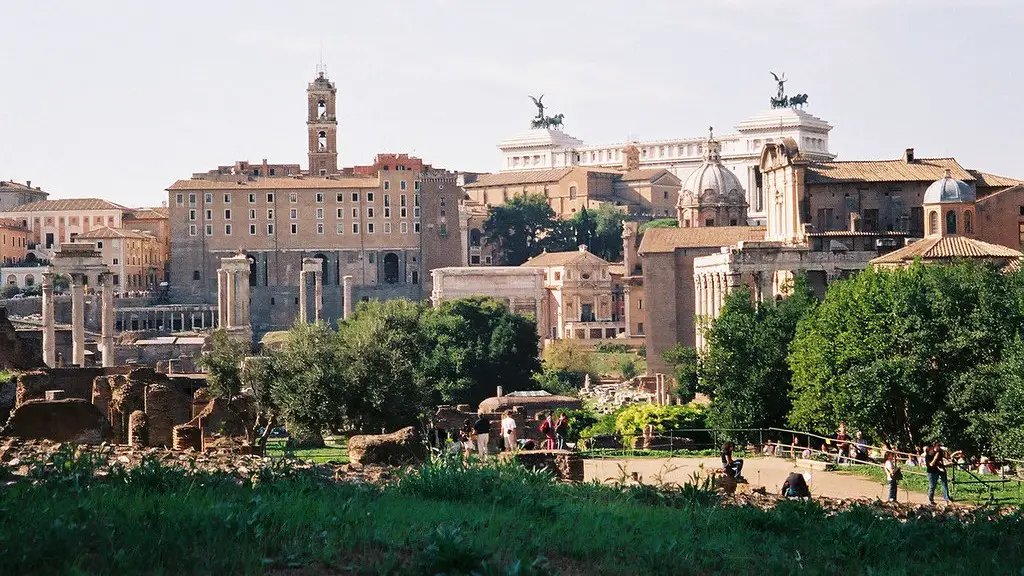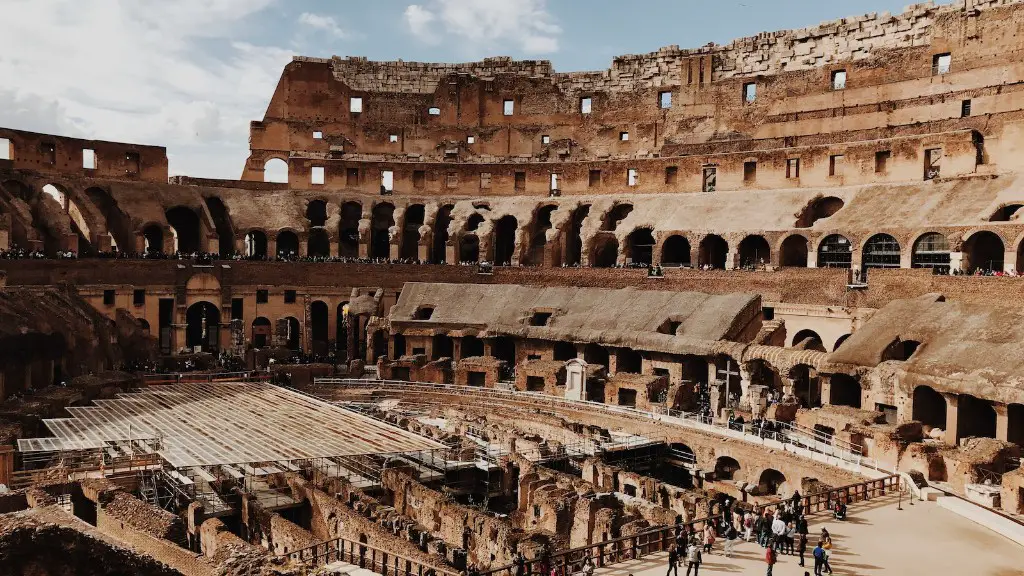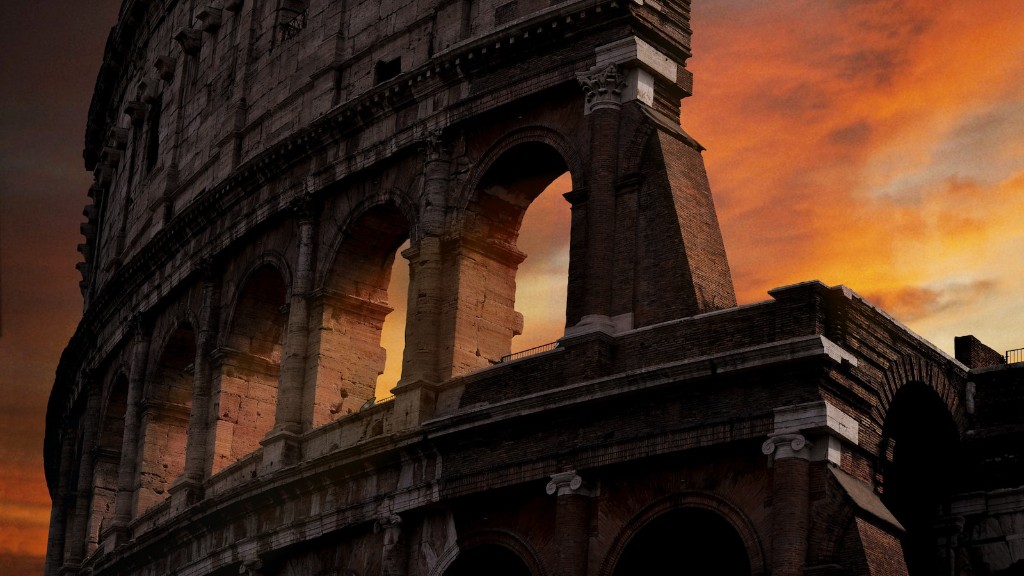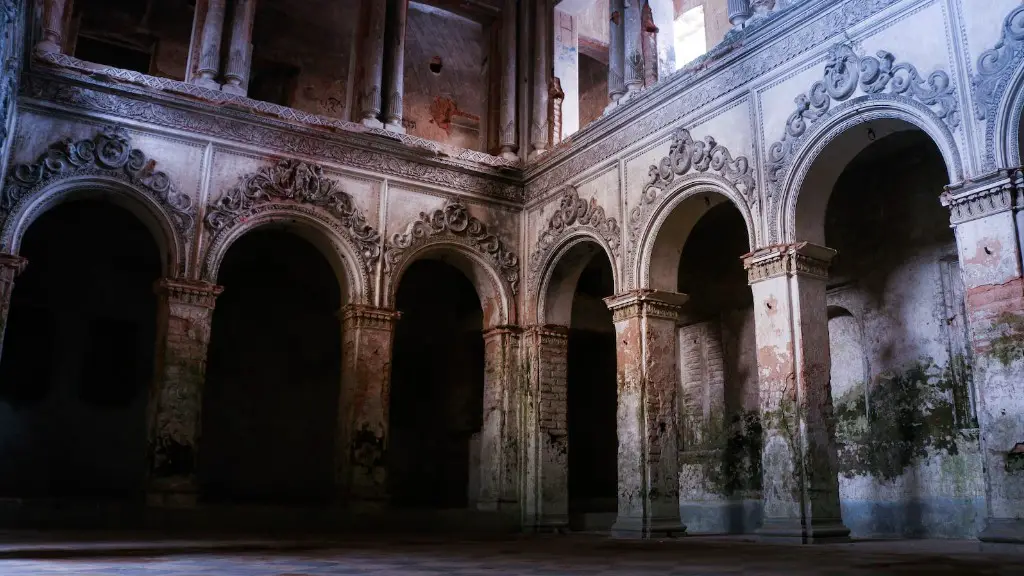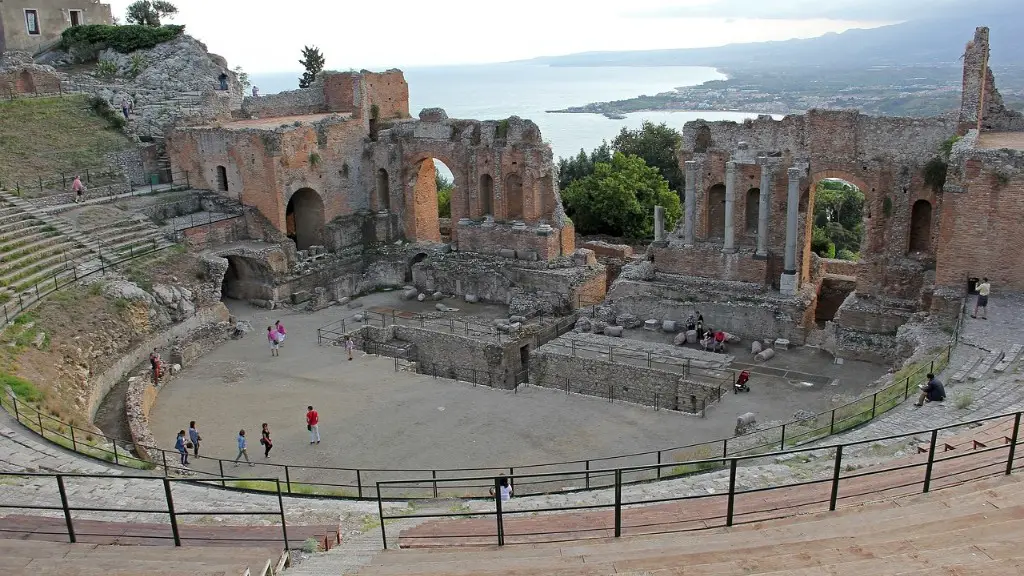Statues have been an integral part of the culture since ancient times. The Romans were particularly fond of statues, using them to commemorate their gods, heroes and victories. The use of statues in Ancient Rome had a variety of purposes, both religious and secular.
Religious Use
Statues in the Ancient Roman world were used primarily for religious purposes. Large, detailed statues depicting the gods of Olympus were erected in public spaces, such as temples and forums. These statues served to remind the Romans of their dedication to their gods, as well as to bring the presence of their gods into the public. Statues of gods were also placed in & around Rome’s sacred shrines and groves, emphasizing the city’s dedication to its gods.
Statues of Roman emperors were also important symbols of Roman religion. Statues of each emperor were often placed in temples, or within the Forum or Basilica as a symbol of the emperor’s authority as a representative of the gods. Emperors often commissioned statues of themselves to be placed around the city in order to remind citizens of the emperor’s authority.
Secular use
In addition to religious purposes, the Romans used statues for secular purposes, such as commemorating the accomplishments of individuals. Honorific statues were erected in public spaces to honor the accomplishments of individuals, often in the form of busts or portrait statues. These statues, many of which still survive today, served as reminders of the accomplishments of these individuals.
Statues were also used to commemorate Roman victories on the battlefield. Victory statues were placed in public spaces such as the Forum to commemorate a victorious battle. These statues not only served as reminders of past triumphs, but also demonstrated the power of the Romans.
In addition to commemorative purposes, statues served a practical purpose in Ancient Rome. Statues were used to mark boundaries, for instance marking the boundaries between cities or between public and private property.
Political use
Statues also were used to demonstrate political power in Ancient Rome. Rulers often commissioned statues of themselves to be placed in public spaces, such as in the Forum or Basilica, in order to demonstrate their authority. Many of these statues were commissioned in the likeness of gods, emphasizing the rulers’ divine right to rule. Statues of gods were also often erected in public spaces as a demonstration of the ruling power’s piety and respect for the gods.
Statues were also used as political symbols in Ancient Rome. Large statues were erected in the Forum or in public spaces to symbolize the power of the ruling group. These statues served to remind citizens of the power of the ruling group, as well as to symbolize the values or ideals of the ruling group.
Funerary Use
Statues were also used for funerary purposes in Ancient Rome. Larger-than-life-sized statues, known as “funerary statues,” were erected in public spaces to memorialize deceased individuals. These statues served to remind citizens of the accomplishments of the deceased individual, as well as demonstrating the wealth and power of the family of the deceased.
Statues were also placed in the tombs of deceased individuals as symbols of their immortality. These statues, often depicting the deceased in heroic poses, were meant to serve as a reminder of the individual’s prowess and his or her connection with the gods. These statues were a way for the deceased to join the gods in the afterlife.
Military Use
Statues were also used in Ancient Rome for military purposes. Specifically, statues were used to honor gods or heroes that were thought to have aided or facilitated the Roman military’s success. Statues of gods such as Mars, Neptune, or Hercules were erected on battlefields to honor and thank them for their contributions to the Roman military’s success. These statues served to both honor the gods and serve as symbols of the power of the Roman Empire.
Statues were also used to commemorate Roman soldiers who died in battle. Bronze statues of soldiers, known as “trophy statues,” were often erected in public places in order to memorialize the fallen soldier. These statues served to remind citizens of the sacrifice made by these individuals, as well as symbolizing the military prowess of the Roman Empire.
Cultural Use
Statues were also important symbols of culture in Ancient Rome. Statues of renowned authors, philosophers, and thinkers were erected in public spaces to demonstrate the value placed on culture and knowledge. These statues served to honor these individuals, as well as to remind citizens of the importance and value of culture.
Statues of heroes from Roman mythology were also used to demonstrate culture. Erecting statues of heroes from Roman mythology, such as Hercules or Aeneas, in public spaces served to remind citizens of their cultural heritage, as well as of the power of the gods. Statues were also used to commemorate acts of valor, such as courageous acts of self-sacrifice, demonstrating the importance of virtue and moral duty in Roman culture.
Artistic Use
Finally, statues were also used to demonstrate the artistic talent of the Romans. Statues of gods and heroes as well as of individuals were intricately crafted and highly detailed, demonstrating the skill of the Roman sculptors. Statues were also often both decorative and educational in nature, demonstrating the importance of art in Roman culture.
Many of the surviving statues from Ancient Rome are still admired for their beauty and craftsmanship. The surviving statues serve as reminders of the skill of Roman sculptors, as well as demonstrating the variety of uses of statues in the Ancient Roman world.
